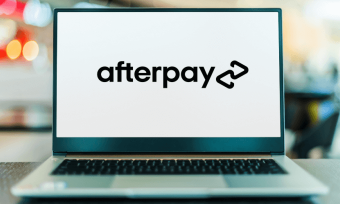What is LatitudePay and how does it work?

Buy now pay later service LatitudePay says that it is no longer accepting new customers. A statement on the company’s website states that the service will no longer be available from 11 April 2023.
LatitudePay says that existing customers will still be able to make purchases up to and including 11 April 2023. The service advises that if you are a customer, your current payment plan remains unchanged – please make sure payments are made in accordance with your Payment Plan Agreement.
LatitudePay has an FAQ for customers affected by the closure on its website. Any queries can be directed to the company by calling 1300 557 787 from 9am-6pm Monday-Friday (AEDT), or making contact online online via the link here.
We will update this article as any new information comes to light about LatitudePay.
LatitudePay is a ‘buy now pay later’ service that gives its customers the option to spend up to $1,000 and spread the repayments out over time. Taking on the likes of Afterpay and Zip Pay, LatitudePay is owned by an established consumer lender, Latitude Financial Services, which already has over 2.8 million customers in Australia and recently listed on the Australian Stock Exchange.
Canstar takes a look at LatitudePay, explains how it works, some thing to watch out for and how it compares to other BNPL providers.
What is LatitudePay?
LatitudePay is an interest-free buy now pay later (BNPL) service. Similar to other BNPL providers, LatitudePay lets you spend up to $1,000 in-store or online with selected retailers, and spread the repayments over 10 weeks. As long as customers make all their repayments on time, they won’t incur any fees or charges, according to Latitude. However, as we’ll see, late fees can apply.
Latitude Financial Services is also in the process of rolling out LatitudePay+. This is a new service that, at the time of writing, is in pilot phase and is available to select customers by invitation only. LaitudePay+ lets customers spend up to $3,000 and spread the repayment, interest free, over 6,12,18 or 24 months for a monthly fee of $10.
How does LatitudePay work?
LatitudePay can be used to pay for online and in-store purchases at participating retailers. While shopping online, you will be able to select LatitudePay as your payment choice at the online checkout. If this is your first time using LatitudePay, you will be directed to an online application page and will be asked for your ID (such as an Australian driver’s licence or passport) and a debit or credit card (for the repayments).
When shopping in-store at a participating retailer, you can set up a LatitudePay account online, then let the sales assistant know you would like to pay with LatitudePay and they will create a payment plan for you using your name, mobile phone number and details of the purchase. LatitudePay says it will send you a text message, which you can click on to go through to its website and confirm your purchase.
Either way, Latitude says it may take around two minutes for you to receive approval, and if you’re successful your first payment will automatically process, charging you 10% of the purchase price immediately with the remaining 90% spread over nine weekly payments.
Who can use LatitudePay and how do you apply?
You can apply for LatitudePay, as long as you meet the following criteria:
- You must be at least 18 years old.
- You must either be a citizen or permanent resident of Australia, or hold a temporary Australian visa with at least 12 months remaining.
- You must have a valid Visa or MasterCard credit or debit card
You can go to the LatitudePay website to apply and will need to provide some personal details, including identification such as either your passport or driver’s licence.
How much does LatitudePay cost?
There are no fees or charges to use LatitudePay, as long as you can make the repayments on time. If you miss a payment, there is a late payment fee of $10 and in some cases fees can start to add up if you miss multiple payments, although caps do apply. Late fees are capped at $10 for balances less than $50, or $50 for larger balances. In addition, LatitudePay says that your spending limit will be reduced if you miss three late payments, and if you miss five or more, your account will be permanently blocked.
You may also be charged a fee by your bank for using LatitudePay. It says some banks view the transaction as a cash advance rather than a purchase and, because of this, they charge a separate fee for processing the payment. If this happens to you, it may be worth calling your bank to explain what the payment was for in case it can reverse the fee.
Where can I shop with LatitudePay?
LatitudePay can be used to shop either in-store or online at retailers who have signed up to accept it as a payment option. Harvey Norman was the first retailer to partner with LatitudePay, but the list of partner retailers now includes JB Hi-Fi, The Good Guys, Domayne, Cotton On, Bing Lee, Forty Winks and Angus and Coote. The LatitudePay website contains a full list of its retail partners.
Does LatitudePay affect my credit rating?
When you apply for a LatitudePay account, LatitudePay says it will check your credit score, doing what is known as a ‘soft’ credit check. This means it shouldn’t affect your credit score in the same way as other credit applications might.
It’s worth noting that your credit score may be affected in other ways if you use a BNPL service, according to ASIC. This is because if you take on more credit than you can afford and can’t keep up with your repayments, your BNPL provider may report any late payments or defaults to credit reporting agencies, much like a bank might if you missed a loan repayment.
How does LatitudePay compare to Afterpay and Zip Pay?
Comparing LatitudePay to Afterpay and Zip Pay, the major differences are found in the spending limits and the repayment periods. While LatitudePay and Zip Pay offer a spending limit of up to $1,000, Afterpay sets its limit at $2,000. LatitudePay allows its customers to pay off the balance over 10 weekly payments, starting at the time of purchase, whereas Afterpay sets its repayments over four, fortnightly payments, starting at the time of purchase.
Zip Pay, on the other hand, allows you to set your own repayment schedule, offering up to three months interest fee. However, if you want to avoid paying monthly fees of $6, you will need to clear any balance by the end of the first month. There are no monthly fees for LatitudePay and Afterpay.
LatitudePay charges a $10 late payment fee which is capped at $10 for purchases under $50 and capped at $50 for purchases over $50. Afterpay also charges a late payment fee of $10 which is capped at 25% of the purchase price or $68, whichever is less. Zip Pay charges a late payment fee of $5.
All are accepted either instore or online at participating retailers. Afterpay and Zip Pay can also be added to an Apple Pay or Google Pay wallet and used where these payment types are accepted.
Compare BNPL providers in Australia
What should you watch out for when using LatitudePay?
In November 2020, financial regulator ASIC released a report on the buy now pay later (BNPL) industry, which found that one in five consumers surveyed in the past year had missed or were late paying other bills in order to make their BNPL payments on time. Missed payments included things such as household bills (44%), credit card payments (32%) and home loan repayments (22%).
Canstar money expert, Effie Zahos said users should heed the warnings. “The idea behind buy now, pay later is clever. You get an immediate shopping hit without having to pay the full price upfront. There’s no interest payable and minimal fees if you repay on time. Trouble is, it’s so convenient that it is influencing consumer spending. You may not be charged interest but make no mistake, buy now pay later can potentially get you into just as much trouble as a credit card.”
In March 2021, a group of eight of Australia’s largest BNPL companies, including LatitudePay, signed up to a voluntary ‘code of practice’, which they drafted in consultation with ASIC. The code sets out the minimum standards the companies need to meet, including a cap on late fees, credit checks being required on transactions of more than $2,000 and a minimum age of 18 years for customers to be able to use the services. While some consumer groups have said that the code is a “positive” step, they do not believe it is an adequate substitute for government regulation.
What can I do if I can’t meet my LatitudePay repayments?
If you find yourself in financial trouble and struggling to make your LatitudePay repayments on time, LatitudePay recommends you get in touch over the phone or by filling out an online form as soon as possible. It may offer support such as a modified repayment plan. You could also speak to a financial counsellor or call the National Debt Helpline for support and advice on 1800 007 007.
Cover image source: Rawpixel.com/Shutterstock.com
This article was reviewed by our Editor-in-Chief Nina Tovey before it was updated, as part of our fact-checking process.

- What is LatitudePay?
- How does LatitudePay work?
- Who can use LatitudePay and how do you apply?
- How much does LatitudePay cost?
- Where can I shop with LatitudePay?
- Does LatitudePay affect my credit rating?
- How does LatitudePay compare to Afterpay and Zip Pay?
- What should you watch out for when using LatitudePay?
- What can I do if I can’t meet my LatitudePay repayments?





